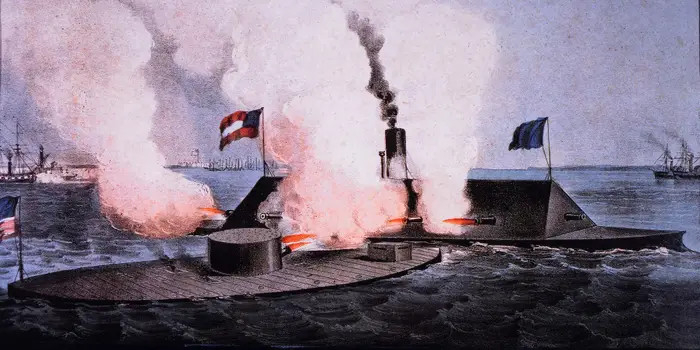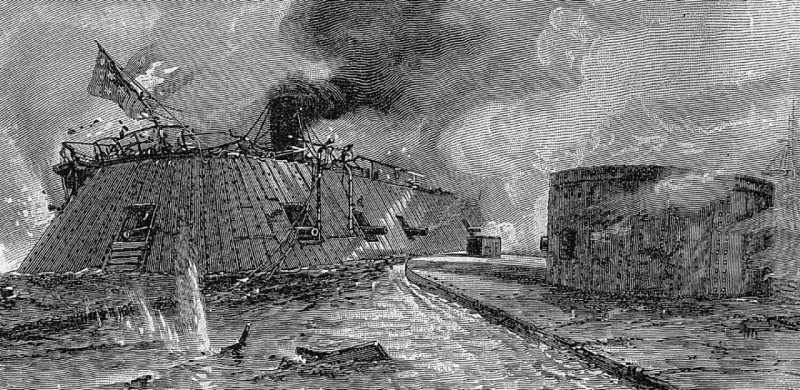Sensing that their shells could do little damage, even at close range, Virginia ceased firing at the Monitor during the battle
The Confederates were persuaded of the folly of wasting shells and powder on the Monitor after two hours of close-range naval gunfire. When asked why his gun crews on Virginia had stopped firing at the Monitor, Lieutenant John Eggleston responded, "[a]fter two hours of incessant firing I find that I can do the Monitor about as much damage by snapping my thumbs at her every two minutes and a half."
Virginia only had explosive shells rather than solid shots, which further decreased its ability to penetrate armor. At one point during the conflict, the crew of Virginia resorted to trying to shoot muskets into the Monitor's open gun ports. In order to find safety in shallow water where deep-draft Virginia cannot follow, the Monitor disengages and moves there. Sensing that their shells could do little damage, even at close range, Virginia ceased firing at the Monitor during the battle. Despite its momentary advantage, Virginia withdraws and makes its way to Portsmouth for safety since it is low on ammunition and is in danger from the receding tide.












